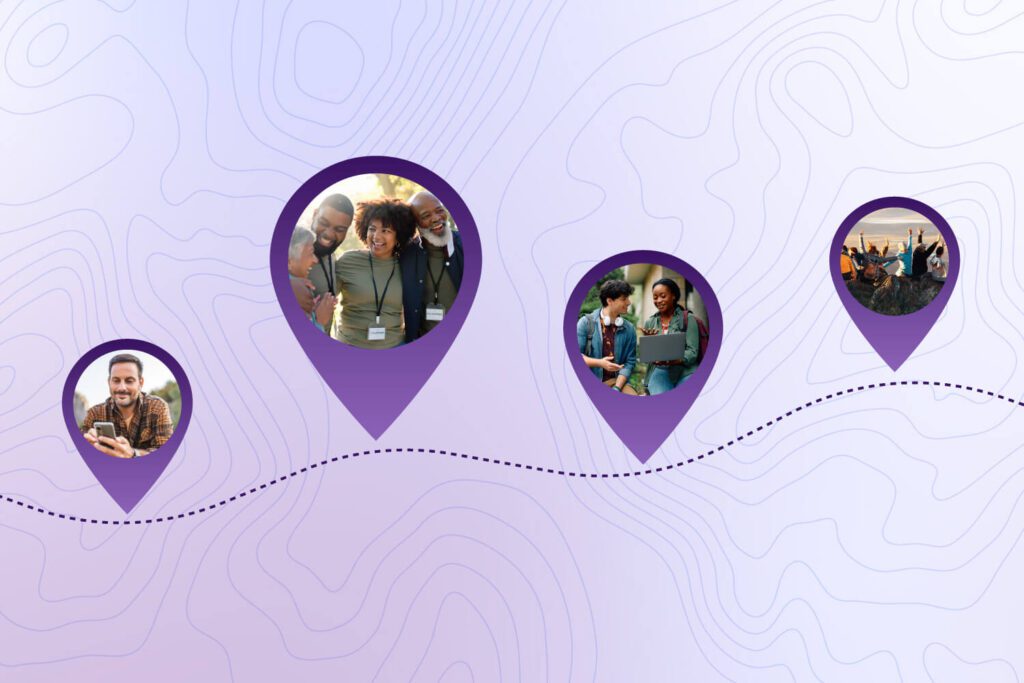As the great demographic shift continues to take place—the large Baby Boomer cohort enters their final years as nonprofit organizations’ primary donor audience, and the much smaller Gen X cohort rises to take Baby Boomers’ place—organizations will need to raise increasing amounts of money from smaller groups of people. In short: building and maintaining authentic connections with existing donors is only becoming more important.
The Chronicle of Philanthropy defines donor surveys as one way to build relationships with your supporters—and that can help you retain them for the long run. Sean Triner, a cofounder of fundraising firm Moceanic, calls surveys “the single most important tool in a fundraiser’s toolbox” due to their utility as a listening tool.
The best surveys, Triner said, are “interested in what each and every donor has to say,” which is why organizations should “focus on finding out why [donors] care about your work and which aspects they value the most.” Those insights will help you understand their motivations for giving and guide you in finding the right ways to inspire them to give again.
With these guiding principles in mind, here are seven of our favorite donor survey tips and tactics from the Chronicle, plus seven ways your nonprofit technology can give you the boost you need to get the most out of each one.
1. Make sure your survey asks for the right information
Before you send your survey, be sure the information you’re asking for is applicable and usable. Check to ensure your survey:
- Identifies what you want to learn. Determine what information you need to drive desired changes to your donor engagement strategy, then craft a survey that gathers that information. This will not only give you valuable insight but also drive engagement by showing donors you want their feedback before making any major changes.
- Prepares an actionable plan for the information after it has been collected. It’s important to write your survey questions in ways that allow you to take specific action based on your findings. After asking donors for their time and opinions, make changes based on their responses to show your audience their input is meaningful.
Make the most out of your survey results by tracking them in your CRM to easily access and leverage this information in future supporter messages.
2. Select your audience
Don’t limit your audience to existing donors. Surveying prospective donors will equip you with responses from a wide-ranging audience, which you can share with public-facing staff for donor acquisition and retention purposes. Consider the following supporters you might request feedback from:
- Volunteers
- Social media followers
- Peer-to-peer fundraiser participants
The Chronicle notes that feedback can be used “to ensure that those on the front lines of your work understand and talk about it effectively.” Ultimately, this “will help you build a pipeline of donors and keep existing ones.”
Use personalization and targeting capabilities in your CRM and email tools to ensure your supporters are receiving survey-related messages that make sense to them. For example, you might target planned giving donors in one message, while another message about retaining first-time peer-to-peer donors will look and feel different.
3. Choose the survey format
Digital channels can be an effective and affordable way to survey your supporters, especially when compared to direct mail surveys. Many organizations can easily incorporate a digital survey into existing online outreach strategies.
However, just because digital channels are accessible doesn’t necessarily mean the answer is to completely cut out other channels from your survey efforts. Direct mail and phone calls can help organizations dive deep into supporters’ opinions and access opinions that they might not otherwise share.
From the initial survey to your follow-up strategy, a multi-channel outreach strategy can collect the highest number of quality responses from your audience. Test and utilize the channels your audience prefers to engage them long after your survey closes.
4. Ask for donations
Although the focus of surveys isn’t revenue generation, the Chronicle notes that it can be worthwhile to include an ask for donations associated with your survey.
It’s important to offer your supporters the chance to give where it makes sense to do so—in this case, at the end of your survey. No one wants to overwhelm their audience with donation asks, but your donors, volunteers, advocates, and other audience members resonate with your organization’s purpose, and they’ll usually welcome the opportunity to support your work.
Custom donation pages can help you make sure your forms are on-brand and effective. Boost your donation appeal results and avoid leaving money on the table by including a link to your easy-to-use donation page at the end of your survey.
5. Decide when to send your survey
When it comes to choosing the right time of year to send your survey, the Chronicle recommends being strategic. Sending out a donor survey in the middle of your busiest season, when you won’t have the capacity to analyze and implement programmatic changes based on your results, might not be effective.
Your survey’s timing will depend on the unique timeline of your organization’s campaigns, but some seasons are similarly chaotic for most nonprofits. For example, the end of the year is typically an all-hands-on-deck season for many fundraising teams, so The Chronicle suggests sending a survey in July or August instead. This gives nonprofits enough time to implement their findings before the start of their year-end campaigns.
Be sure to plan accordingly for your busy seasons throughout the year. As you revamp and launch your survey, give yourself plenty of time to adjust your campaigns based on donor feedback.
6. Leverage technology to send relevant surveys
When asking supporters to participate in your survey, it’s important to consider their current perspectives of your organization’s work. Show supporters you’re genuinely interested in their thoughts by demonstrating that your organization understands the effects of current events and context.
Organizations can also leverage technology when sending supporters content that’s relevant to the moment. Multivariate testing, which experiments with different outcomes by changing multiple variables, can be used to identify which message resonates with your supporters. For example, in email messages, you might alter:
- Subject lines
- Email text
- Fonts and paragraph structure
- Multimedia content
Measure your success through various metrics, such as open rates, click-through rates, and conversions. This can help you get a realistic idea of your campaign’s performance.
7. Request contact information
You’re already using your survey to ensure your campaigns make the right requests of supporters. Use this opportunity to ensure the data you have sends those requests to the right contacts. The Chronicle recommends including a request to add or update donors’ contact information, which creates opportunities to expand the number of channels you can use to contact your supporters.
For example, if you’ve considered adding SMS to your multi-channel communications ecosystem, you might start collecting opt-ins for supporters who respond to and interact with your content. You don’t need to launch a texting program tomorrow, but with opt-ins collected from supporters who were willing to share their opinions with you, you’ll be ready to take that step when the time is right.
Stay in touch with your supporters, give them a smoother experience, and save staff time by offering them the ability to control and update their own information via self-service pages.
Engage donors through smart donor surveys
Just as you should tailor your survey approach based on supporter feedback, reevaluate your surveys based on supporter participation, as well. Proven techniques and strategies for donor surveys are valuable, and the technology your nonprofit uses can help you make the most out of every effort.




